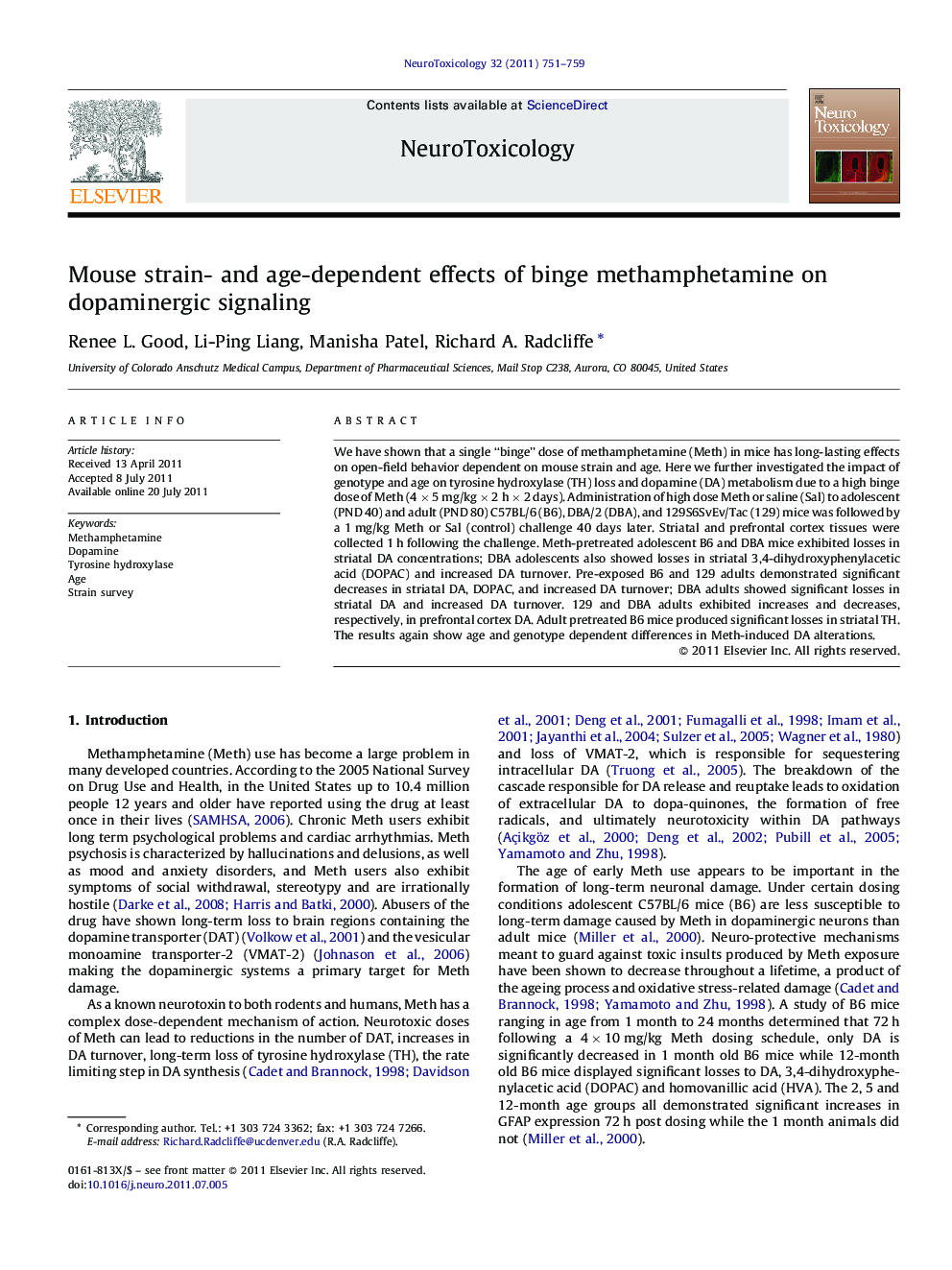| Article ID | Journal | Published Year | Pages | File Type |
|---|---|---|---|---|
| 5855425 | NeuroToxicology | 2011 | 9 Pages |
We have shown that a single “binge” dose of methamphetamine (Meth) in mice has long-lasting effects on open-field behavior dependent on mouse strain and age. Here we further investigated the impact of genotype and age on tyrosine hydroxylase (TH) loss and dopamine (DA) metabolism due to a high binge dose of Meth (4 Ã 5 mg/kg Ã 2 h Ã 2 days). Administration of high dose Meth or saline (Sal) to adolescent (PND 40) and adult (PND 80) C57BL/6 (B6), DBA/2 (DBA), and 129S6SvEv/Tac (129) mice was followed by a 1 mg/kg Meth or Sal (control) challenge 40 days later. Striatal and prefrontal cortex tissues were collected 1 h following the challenge. Meth-pretreated adolescent B6 and DBA mice exhibited losses in striatal DA concentrations; DBA adolescents also showed losses in striatal 3,4-dihydroxyphenylacetic acid (DOPAC) and increased DA turnover. Pre-exposed B6 and 129 adults demonstrated significant decreases in striatal DA, DOPAC, and increased DA turnover; DBA adults showed significant losses in striatal DA and increased DA turnover. 129 and DBA adults exhibited increases and decreases, respectively, in prefrontal cortex DA. Adult pretreated B6 mice produced significant losses in striatal TH. The results again show age and genotype dependent differences in Meth-induced DA alterations.
⺠We examined the long-term effects of high dose methamphetamine on DA and TH in several strains of mice at adolescence and adulthood. ⺠Strain- and age-dependent effects were observed for DA levels and turnover, and for TH levels. ⺠These changes may have important implications for methamphetamine addiction.
